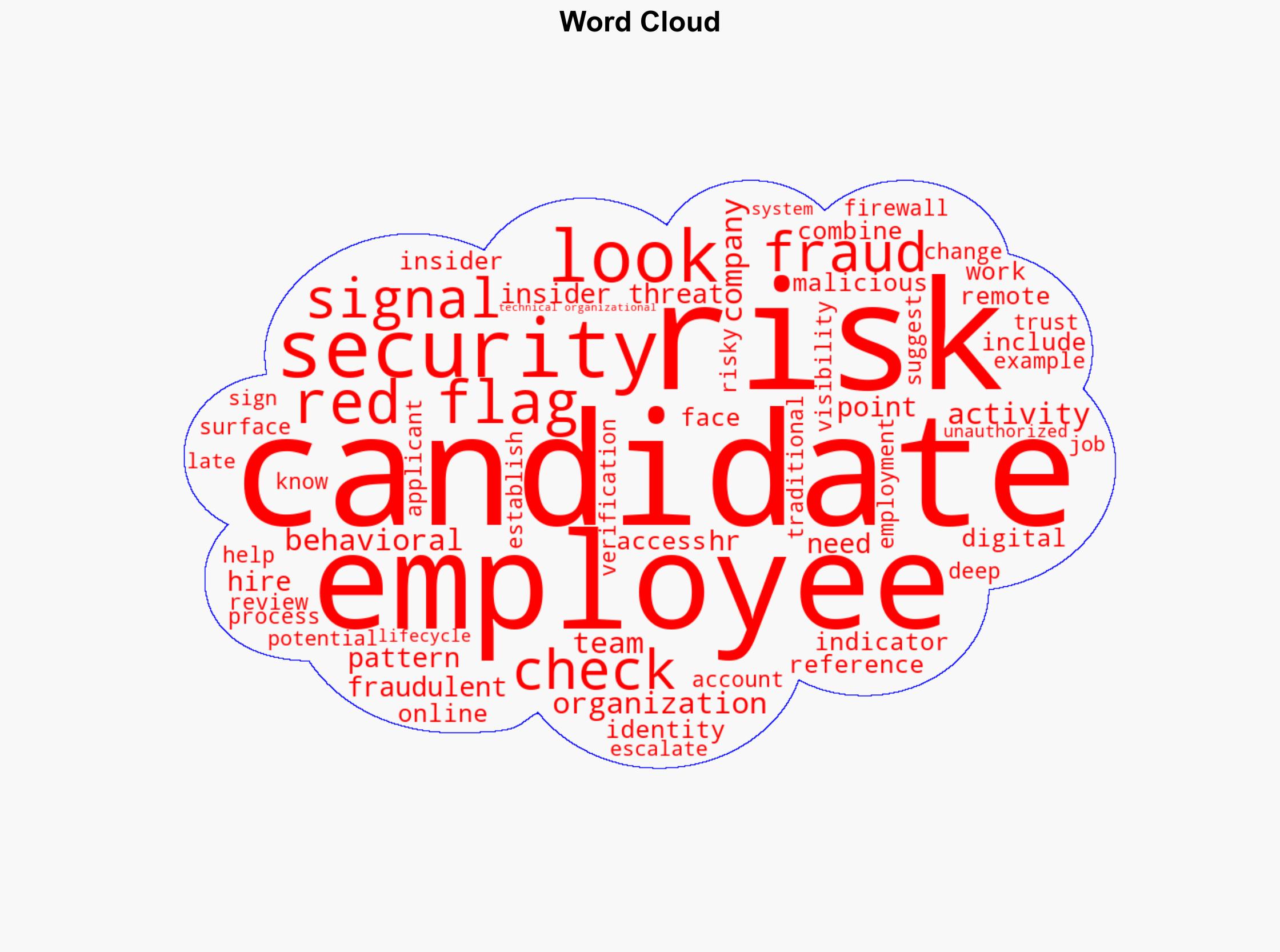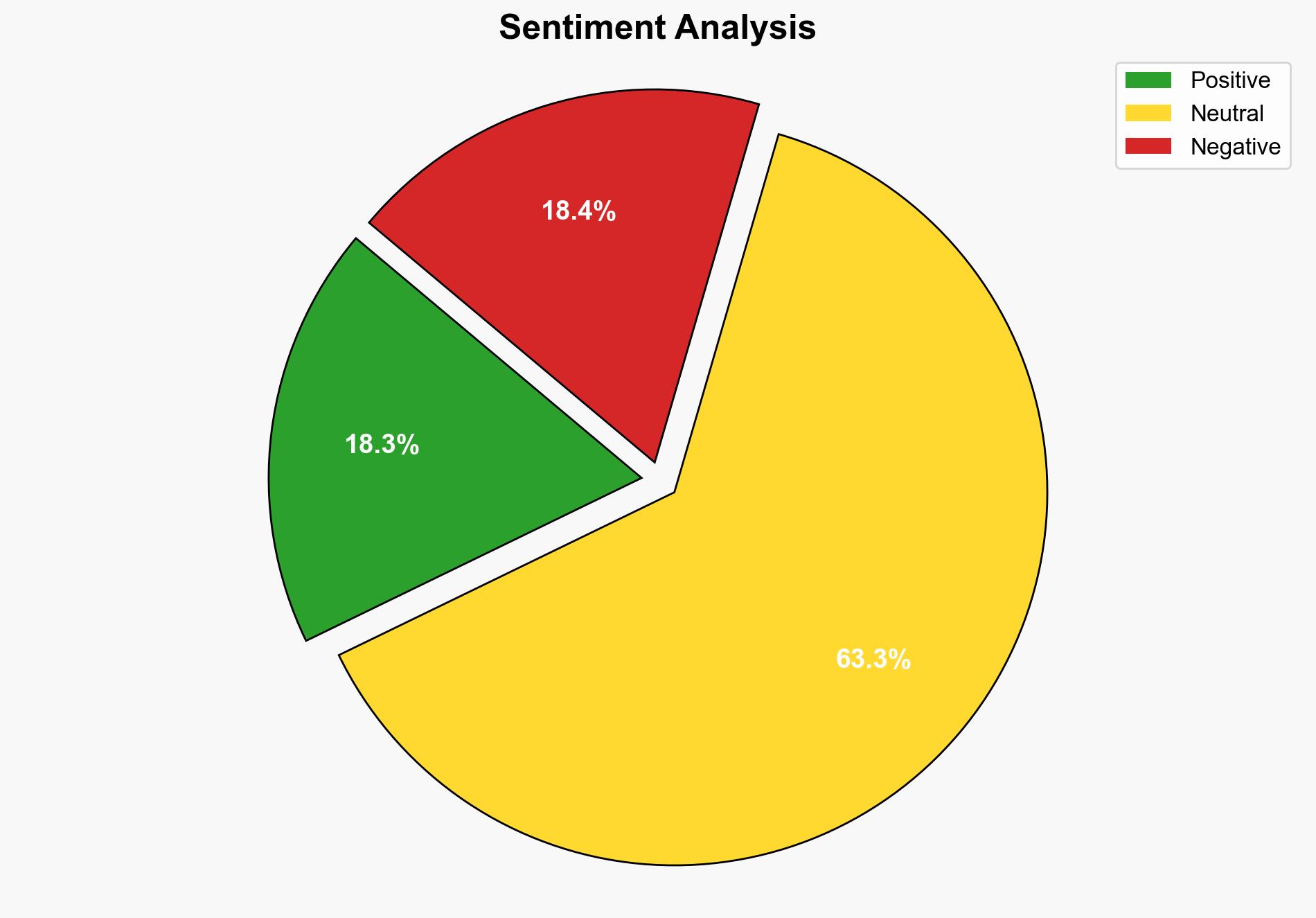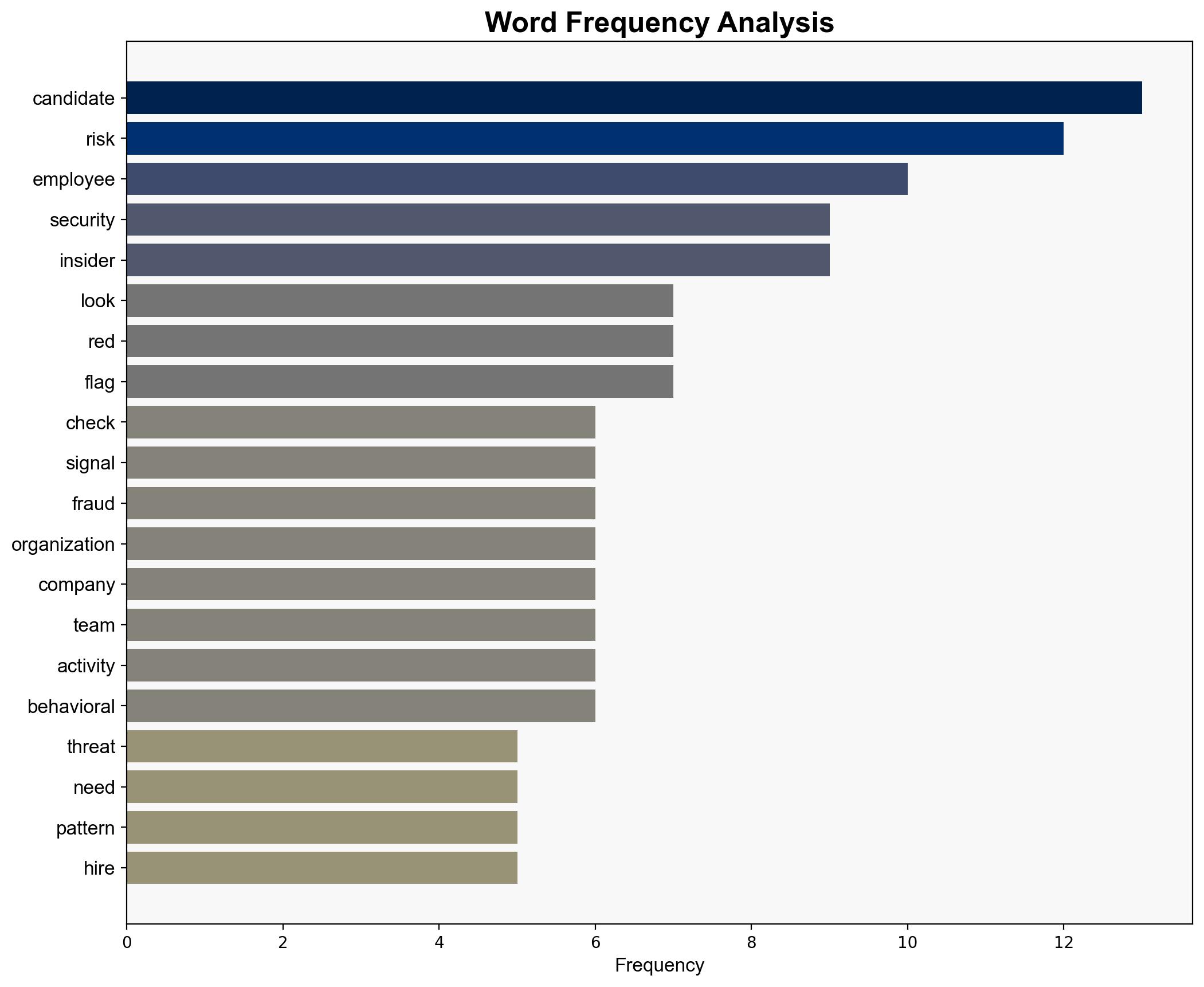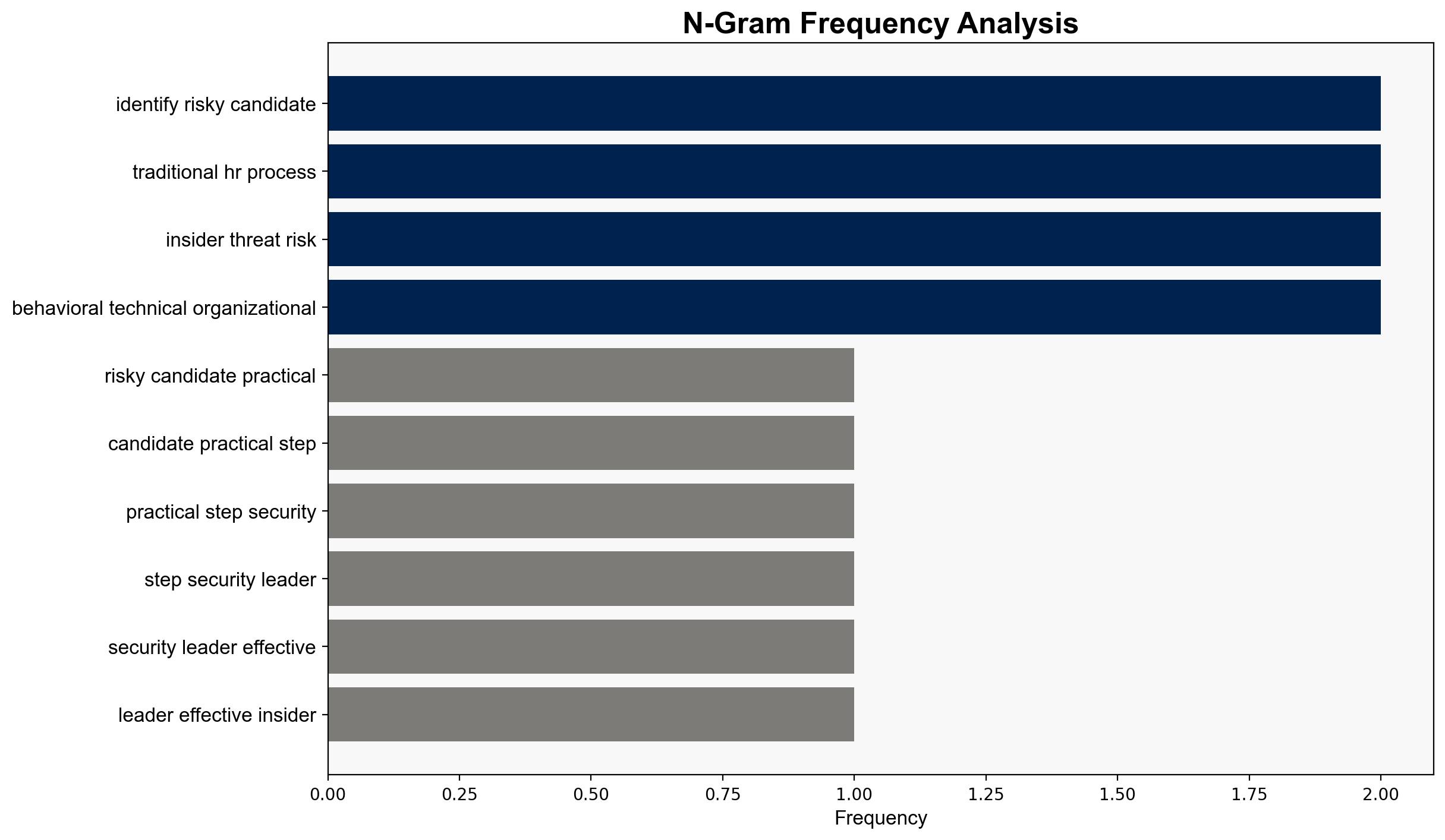Identifying risky candidates Practical steps for security leaders – Help Net Security
Published on: 2025-10-16
Intelligence Report: Identifying Risky Candidates – Practical Steps for Security Leaders
1. BLUF (Bottom Line Up Front)
The most supported hypothesis suggests that a combination of traditional HR processes and digital risk assessments is essential for identifying risky candidates effectively. Confidence in this hypothesis is moderate due to the evolving nature of digital footprints and insider threats. Recommended action includes enhancing collaboration between HR and security teams to integrate digital risk signals into the hiring process.
2. Competing Hypotheses
Hypothesis 1: Traditional HR processes, when combined with digital risk assessments, provide a comprehensive approach to identifying risky candidates. This hypothesis is supported by the need for identity verification, credential validation, and digital risk assessment as outlined in the source.
Hypothesis 2: Sole reliance on traditional HR processes is sufficient for identifying risky candidates, as digital risk assessments may lead to false positives and mistrust. This hypothesis is less supported due to the increasing sophistication of fraudulent activities and the digital footprints left by malicious insiders.
3. Key Assumptions and Red Flags
– Assumption: Digital risk assessments can reliably identify fraudulent candidates without significant false positives.
– Red Flag: Over-reliance on digital signals may overlook candidates who maintain a clean digital presence but engage in malicious activities offline.
– Blind Spot: The evolving tactics of fraudsters and insiders may outpace current detection methods.
4. Implications and Strategic Risks
– The integration of digital risk assessments with HR processes could lead to improved detection of insider threats but may also increase the risk of privacy concerns and potential legal challenges.
– Failure to adapt hiring practices to include digital risk signals may result in increased vulnerability to insider threats, potentially leading to financial and reputational damage.
– Geopolitical implications include the risk of foreign entities exploiting weaknesses in hiring processes to infiltrate organizations.
5. Recommendations and Outlook
- Enhance collaboration between HR and security teams to integrate digital risk signals into the hiring process.
- Develop training programs to improve the detection of digital red flags among HR personnel.
- Scenario-based projections:
- Best Case: Successful integration of digital risk assessments leads to a significant reduction in insider threats.
- Worst Case: Increased false positives from digital assessments result in legal challenges and a climate of mistrust.
- Most Likely: Gradual improvement in detecting risky candidates with ongoing adjustments to balance privacy and security.
6. Key Individuals and Entities
No specific individuals are mentioned in the source text. The focus is on HR and security teams within organizations.
7. Thematic Tags
national security threats, cybersecurity, counter-terrorism, regional focus





